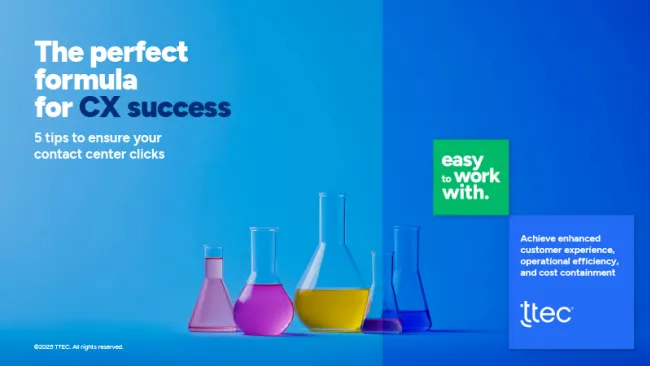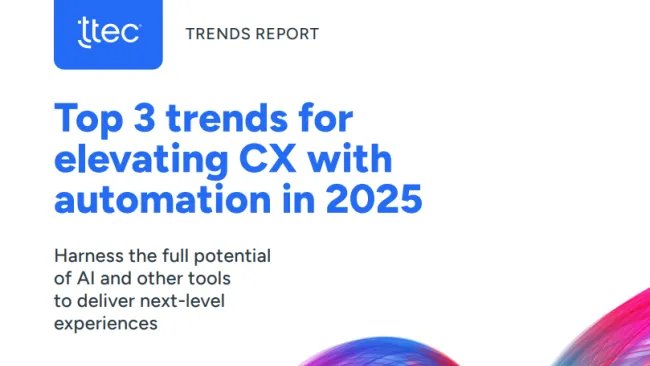With apologies to Chicken Little, Michael Cho kicked off the inaugural TTEC Healthcare CX Series of webinars with some sobering stats about healthcare enrollment trends. It was the right elixir to energize Blue Cross Blue Shield health plans to embrace innovation for the coming signup season.
With 21 annual enrollment periods under his belt, the CEO and co-founder of MyMedicareBot has seen much change to the competitive landscape. He identified the chief challenges health plans and distributors will face this year and shared his take on how newly released CMS rules governing marketing, Star Ratings, and other areas will impact the next annual enrollment period (AEP.)
The interactive webinar hosted by TTEC Healthcare Solutions explored a wide range of enrollment issues, from acquisition strategies to the role of technology and analytics, intelligent call routing, staffing, and how to keep members engaged throughout the year, all while delivering an exceptional experience that boosts retention and loyalty.
Medicare Advantage pushes forth
Cho challenged Blue Cross Blue Shield attendees at the April 13 live online event to estimate Medicare Advantage’s nationwide penetration rate during the most recent AEP. One participant guessed 30%; another, 45%.
The correct answer: 52% was Medicare Advantage’s penetration rate, with 30 million members enrolled,
Cho said. “Put another way,” he added, “Joe Namath, Jimmie Walker, and William Shatner have done an amazing job introducing everybody to Medicare Advantage (MA).
“When you have high MA penetration, it then triggers slowing growth,” Cho said. “For a lot of plans last year, AEP was bad. It was bad from both from a growth perspective and from a retention perspective and for many of the Blues with a large MedSup population, it was a terrible year of a continuing trend of Medigap-to-MAPD conversion.”
Cho shared more insights from MyMedicareBot’s just-released “2023 AEP Retrospective Report,” including how many MA beneficiaries the seven largest carriers enrolled this past season and what that means for the remaining 4,800 other health plans. He revealed the Blues’ MAPD growth rate and how that compared to national carriers.
“This is important,” Cho said. “Everybody is beefing up. This is not a fight you want to go alone.” He encouraged collaboration “so we can stop the barbarians at the gate.” He said the Blues are good at coordination but can do better with collaboration.
Collaboration and best practices
One organization driving collaboration is the Insurance Marketing Coalition (IMC), whose mission is to support consumer choice and protecting consumers’ best interests, said Shaun Greene, co-founder, IMC. The idea-sharing forum focuses on lead generation, advertising, marketing, regulatory requirements, and retention.
“We need to rely more on technology such as conversational AI,” Greene said. “Back in October 2021, one of the things CMS recommended is that we listen to all phone calls. At that time, that was not feasible. But conversational AI makes it possible and it’s only going to get more powerful.”
Greene touched on other solutions and strategies health plans can leverage to improve enrollment. “Make sure agents are using their pre-agent checklist. Plan finders. There are training bots out there. TTEC is a big user. The training bots they use make sure agents are ready for prime time before they get on the phone talking to clients and members.”
IMC drafted a four-step plan to improve retention that calls for periodic interactions with members throughout the year, not just during the enrollment season. “Check in [with members] in January,” he said. Ask members if they have questions; touch base in the summer and the fall and offer to evaluate their current plan to ensure it’s the right fit or if another plan better suits their needs.
“If they are not happy with the plan they are in and they see that Joe Namath commercial, they may switch on you.”
Bright spot: Precision routing
“There’s never been a better time to leverage data,” said webinar host Clay Heinz, group vice president, growth and strategy, TTEC. He said TTEC Digital’s Marcy Riordan, global analytics and insights practice lead, and her team “have done some amazing things by leveraging data not just to drive conversions and more enrollments at a lower cost but also to drive retention, and more importantly, better health outcomes.”
TTEC leverages data analytics across many business sectors, Riordan said, and “The healthcare space, as far as data goes, is one of our favorite places to apply what we have learned. The proliferation of data is better than it’s ever been and we see a ton of opportunity.”
Riordan demonstrated how data-driven precision call routing enables a health care plan to successfully convert inbound leads and retain members. Members are scored according to propensity to buy (or enroll in a plan) while associates are scored according to propensity to sell (sign up a member.) With this visibility, a prospective or returning member is directed to the associate best-equipped to serve the caller’s needs.
“And we can score on that very first call,” Riordan added. On subsequent interactions, members’ scores are updated based on behaviors and activities such as inquiring about a health plan informational seminar, registering to attend that seminar, and other behaviors indicating rising interest in enrollment.
A caller who’s already decided to enroll – high propensity to buy – is paired with an associate trained to complete the steps to sign up a member quickly and deliver a great experience. Callers who are undecided about enrollment, with a lower propensity-to-buy score, are paired with highly skilled associates capable of handling the more complex questions, objections, and scenarios to successfully convert. This intelligent routing strategy has proven to deliver a 7 percentage point improvement in application rates, translating to a 10% increase in enrollments, Riordan said.
Seasonality strategy
“Labor continues to be the biggest driver of cost each year as health plans look at how they will staff for the tsunami of activity,” said Ebony Langston, VP, TTEC Healthcare Solutions. “There is a supply and demand imbalance in the market but not enough qualified or interested people to fill them. Inflation is putting additional pressure on wages.”
Langston said a lot of healthcare is seasonal but there are opportunities to create a vision for your team to have a future with your organization, rather than for just one enrollment season. She offered some ideas to elevate the employee experience (EX) and improve employee retention.
- Instead of releasing licensed agents or advocates supporting member acquisition, consider using that same staff, instead of ramping down, to create a member-focused experience that is consistent
- Explore digital training, AI-supported role-playing activities that help associates practice new skills, and AI chatbots that assist associates with live calls
- Partner with other plans to share costs, including technology and analytics
- Create mini promotions within your line of business
- Implement a stronger interactive voice response (IVR) system
Training is key, she added, because when you invest in hiring and training the right talent, you don’t want to lose those valuable assets. “Build a skilled training program that gives employees an opportunity to know what they need to do to level up to the next step in their career” so they stay with you and play a vital role in a proactive engagement strategy.
Save the date for the next TTEC Healthcare CX Series webinar, Thursday, June 8, when we’ll tackle the topic: “Optimizing the Member Experience Through Accurate and Timely Inquiry Resolution.”















